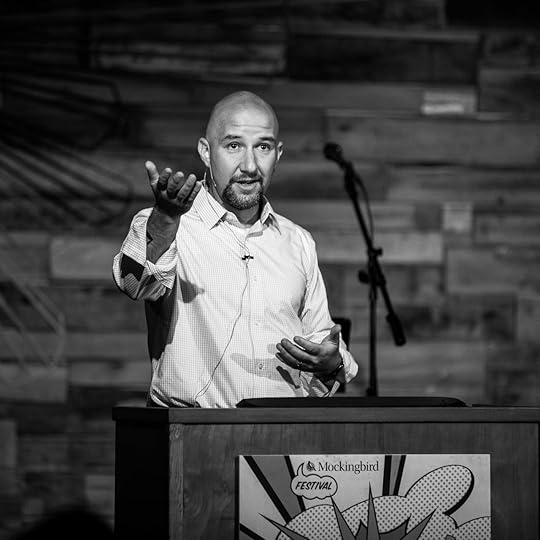Jesus Does Not Live By Faith

If you appreciate the work, pay it forward. Literally! Become a paid subscriber.
Hi Friends,
We will not meet tonight to discuss Bonhoeffer’s “Lectures on Christology.” One of my dogs, Vaughn, is in the hospital, and I’m feeling blue. We will gather again next Monday to work our way through these pages:
Bonhoeffer Reading 42.46MB ∙ PDF fileDownloadDownloadJesus Does Not Live By FaithRemember how Bonhoeffer began these lectures by emphasizing the who question, “Who is Christ?” Dismissing both speculative abstraction and reductive historicism, Bonhoeffer insists that Christology is reflection upon the living, risen person present now in the church. He cautions against turning Christ into an idea or merely a moral force and insists that Christ must be experienced as the Risen One present in word and sacrament. Jenson, likewise, takes a complementary path, arguing that theology must begin with God’s self‑identification in the gospel narrative—most decisively, the raising of Jesus from the dead. Thus Jenson believes the answer to Bonhoeffer’s question, “Who is Christ?” is necessarily triune; that is, the who of Christ and the who of God converge in the gospel— in the history the LORD makes with us.
It is important to see that for both Bonhoeffer and Jenson— following Karl Barth— theology cannot start with an a priori concept of God. As Jens jokes, “what everyone knows about God” is antithetical to the gospel. Rather than beginning with our assumptions about deity, we must commence with the God revealed in the scriptures.
Our starting point for thinking about God is his narrative identity.
Not metaphysical attributes.
The church makes this very claim every time it utters God’s personal name: Father, Son, and Holy Spirit.
The plain reading of the scriptures, Bonhoeffer and Jenson both insist, reveals nothing short of the claim that the second identity of that personal name, the second person of the Trinity, is Jesus of Nazareth. It’s the Bible not metaphysics that yields the Chalcedonian Formula:
“For us and for our salvation, of Mary the Virgin, the Godbearer;
one and the same Christ, Son, Lord, Only-begotten,
recognized in two natures, without confusion, without change, without division, without separation;
the distinction of natures being in no way annulled by the union,
but rather the characteristics of each nature being preserved and coming together to form one person and subsistence,
not as parted or separated into two persons,
but one and the same Son and Only-begotten God the Word, Lord Jesus Christ.”
Yet Bonhoeffer deepens the Chalcedonian Formula by emphasizing the concrete, paradoxical unity: the eternal enters into time, the divine enters humanity— human history— humiliated and vulnerable, and yet remains the exalted and holy LORD. Christ genuinely suffers and lives under human limits simultaneously without ever ceasing to be God!
Christ does not live by faith. Christ is the humanity of God.
For example:
This is why the Gospels do not report a single instance of Jesus’ prayers to the Father going unanswered (as our prayers often seem to go unanswered). Jesus does not say before Lazarus’ tomb, “I wonder if the Father will do what I’m about to ask?” Christ does not live by faith as we do because Jesus does not ever cease to be God.
Christ does not live by faith as we do because Jesus does not ever cease to be God.
Jenson affirms Bonhoeffer’s emphasis by pointing to the crucifixion. The cross is not the suspension of God’s being, but its fullest revelation. For Jenson, God’s identity as the crucified and risen One integrates the divine life with human history. As God does in the Gospels, so God is.
The Chalcedonian Formula distills a mystery that Bonhoeffer believes we must enter with humility. Acknowledging how of the incarnation is not fully knowable by us, Bonhoeffer stresses that obedience to Jesus means remaining obedient to the mystery.
The Who in “Who is Jesus?” must be confessed.
The How in “How is God Jesus?” can never be demystified.
Faith embraces mystery.
Theology narrates mystery.
It does not solve it.
A good example of the mystery Bonhoeffer theology narrates but does not solve is the genus majestaticum, which he discusses in the attached lecture notes. Simply, the genus majestaticum is the doctrine emphasized by Luther but present in church fathers like Cyril of Alexandria. It stresses the union of Christ's divine and human natures. Thus, Christ's human nature is suffused with divine attributes, meaning that his humanity receives and shares in the qualities of his divinity, such as omnipotence, omniscience, and omnipresence.
As Bonhoeffer says of Martin Luther:
“Luther spoke of the divinity and humanity of Jesus as though they were one nature.”
The humanity of Jesus is fully suffused with the life of God.
Jesus never ceases to be God, even as Jesus ceases to be.Only this unity of humanity and divinity in Jesus, Bonhoeffer argues, makes redemption possible — for if Christ were not truly God, his suffering and death would be meaningless for salvation. At the same time, Bonhoeffer engages the “two states” of humiliation and exaltation, teaching that in his earthly life Christ voluntarily refrains from the full exercise of his divine attributes. This is not a denial of divinity but a self-emptying (kenosis) that allows the eternal Word to live authentically as a human being in time and space, sharing fully in our creaturely condition while remaining the eternal Son.
Bonhoeffer notes that the humiliation of Christ— his living incognito among sinners, even to the point of taking on the likeness of sinful flesh— is not a diminution of his divinity but its truest revelation.
Or, as Jenson puts the same point:
Good Friday forever settles God’s identity. Just as Jesus’s death settles Jesus’s identity once and for all, the resurrection now determines who God is— the Father is now forever the Father of this crucified Son.
For Bonhoeffer, Christ’s majesty is hidden under the form of a servant, revealed not in omnipotence or omniscience but in his gentleness and humility, in his suffering and death for others. In this sense, Bonhoeffer’s “Lectures on Christology” advance what Bonhoeffer calls a “positive Christology” in that it is one which first begins with the concrete reality that Mary’s boy and Pilate’s victim is God and only then contemplates what that means.
The paradox of the humiliated and exalted Christ resists speculative resolution and calls instead for faith: to recognize, by the Spirit, that the true and living God has a mother and an executioner.
What else can you do with such a mystery but handle it with care?
 Get more from Jason Micheli in the Substack appAvailable for iOS and AndroidGet the app
Get more from Jason Micheli in the Substack appAvailable for iOS and AndroidGet the app
Jason Micheli's Blog
- Jason Micheli's profile
- 13 followers



